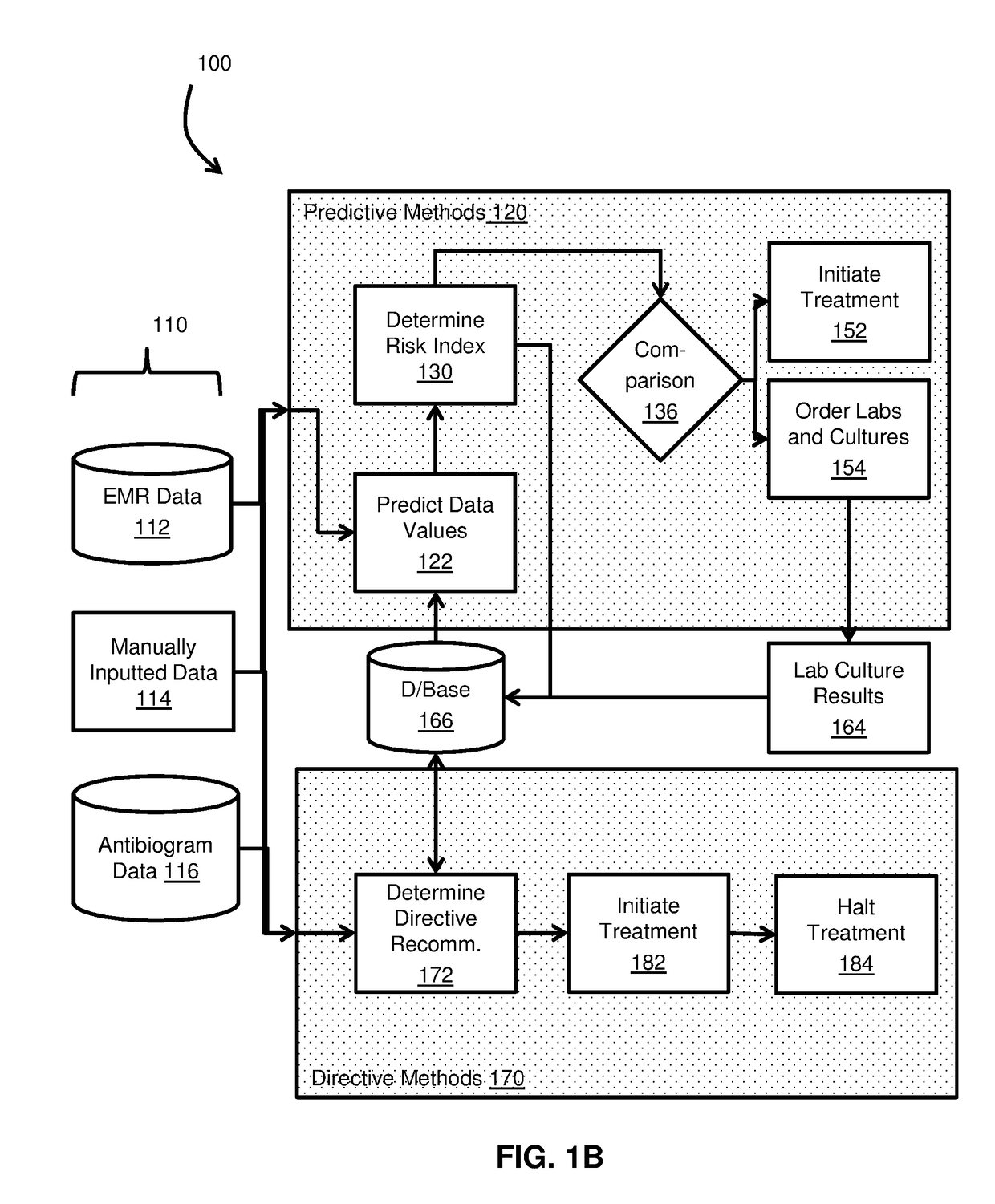Systems and methods to support medical therapy decisions
a technology of medical treatment and support system, applied in the field of medical treatment decision support system, can solve the problems of increasing the risk of mortality in patients with severe sepsis or septic shock, and the persistent problem of optimal treatment and mitigation of serious infections in patients in the intensive care uni
- Summary
- Abstract
- Description
- Claims
- Application Information
AI Technical Summary
Benefits of technology
Problems solved by technology
Method used
Image
Examples
Embodiment Construction
[0030]Systems and methods to support medical therapy decisions will now be described in detail with reference to the accompanying drawings. It will be appreciated that, while the following description focuses on a system that supports antibiotic therapy decisions based on when the patient is predicted to be or trending towards (as indicated by prediction of vital signs and key data sources) sepsis, the systems and methods disclosed herein have wide applicability. Notwithstanding the specific example embodiments set forth below, all such variations and modifications that would be envisioned by one of ordinary skill in the art are intended to fall within the scope of this disclosure.
[0031]Embodiments of systems and methods to support medical therapy decisions recognize shortcomings in the solutions currently available in the medical field. The field's current solution to support recognizing and treating infections, the institution's annual antibiogram, can often exist outside of the e...
PUM
 Login to View More
Login to View More Abstract
Description
Claims
Application Information
 Login to View More
Login to View More - R&D
- Intellectual Property
- Life Sciences
- Materials
- Tech Scout
- Unparalleled Data Quality
- Higher Quality Content
- 60% Fewer Hallucinations
Browse by: Latest US Patents, China's latest patents, Technical Efficacy Thesaurus, Application Domain, Technology Topic, Popular Technical Reports.
© 2025 PatSnap. All rights reserved.Legal|Privacy policy|Modern Slavery Act Transparency Statement|Sitemap|About US| Contact US: help@patsnap.com



